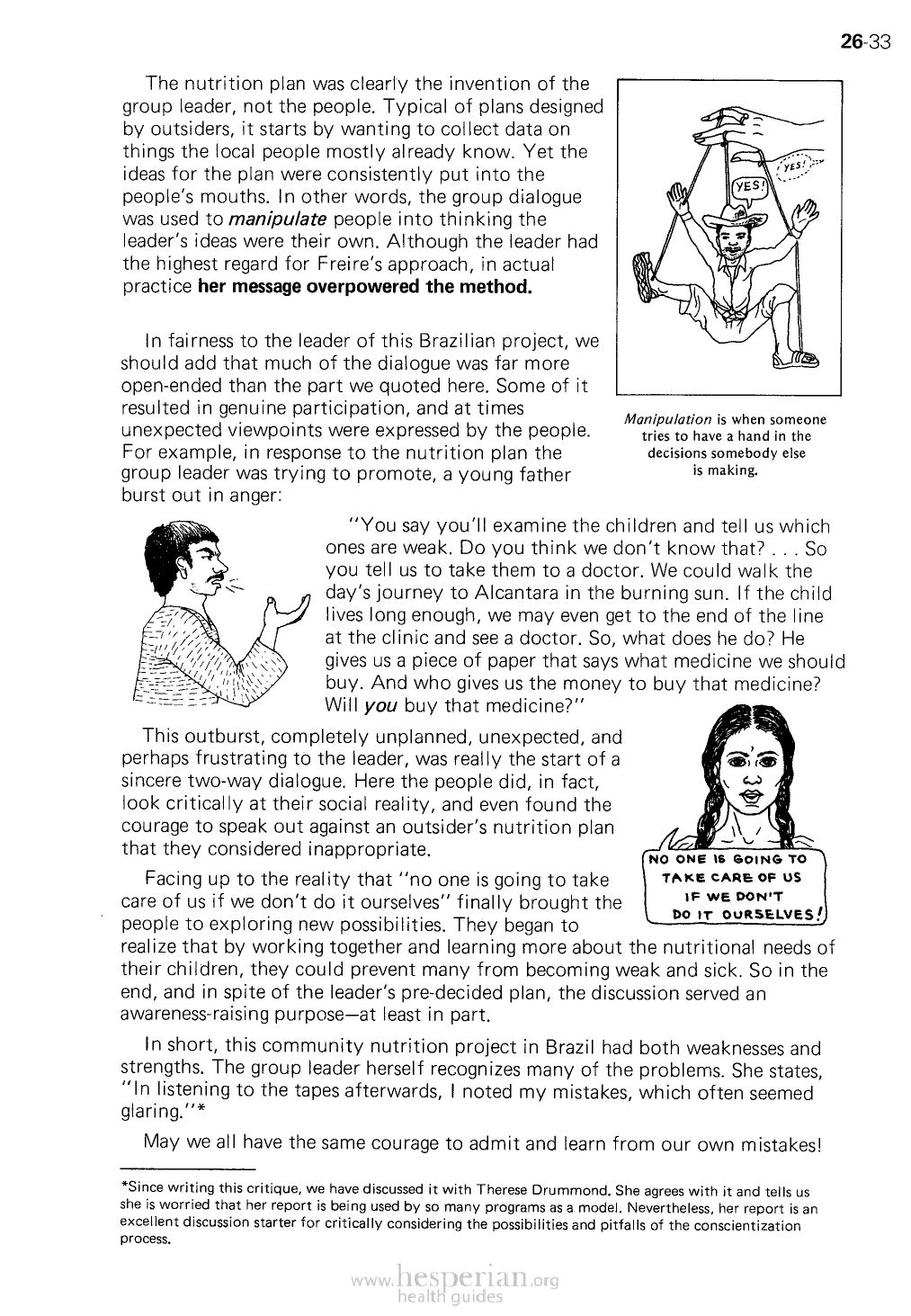
26-33
The nutrition plan was clearly the invention of the
group leader, not the people. Typical of plans designed
by outsiders, it starts by wanting to collect data on
things the local people mostly already know. Yet the
ideas for the plan were consistently put into the people’s
mouths. In other words, the group dialogue was used to
manipulate people into thinking the leader’s ideas were
their own. Although the leader had the highest regard
for Freire’s approach, in actual practice her message
overpowered the method.
In fairness to the leader of this Brazilian project, we
should add that much of the dialogue was far more
open-ended than the part we quoted here. Some of
it resulted in genuine participation, and at times
unexpected viewpoints were expressed by the
people. For example, in response to the nutrition plan
the group leader was trying to promote, a young father
burst out in anger:
Manipulation is when someone
tries to have a hand in the
decisions somebody else
is making.
“You say you’ll examine the children and tell us which
ones are weak. Do you think we don’t know that? ... So
you tell us to take them to a doctor. We could walk the
day’s journey to Alcantara in the burning sun. If the child
lives long enough, we may even get to the end of the
line at the clinic and see a doctor. So, what does he do?
He gives us a piece of paper that says what medicine
we should buy. And who gives us the money to buy that
medicine? Will you buy that medicine?”
This outburst, completely unplanned, unexpected, and
perhaps frustrating to the leader, was really the start of a
sincere two-way dialogue. Here the people did, in fact, look
critically at their social reality, and even found the courage
to speak out against an outsider’s nutrition plan that they
considered inappropriate.
Facing up to the reality that “no one is going to take care
of us if we don’t do it ourselves” finally brought the people
to exploring new possibilities. They began to realize That
by working together and learning more about the nutritional needs of their children,
they could prevent many from becoming weak and sick. So in the end and in spite
of the leader’s pre-decided plan, the discussion served an awareness-raising
purpose-at least in part.
In short, this community nutrition project in Brazil had both weaknesses and
strengths. The group leader herself recognizes many of the problems. She states,
“In listening to the tapes afterwards, I noted my mistakes, which often seemed
glaring.”*
May we all have the same courage to admit and learn from our own mistakes!
*Since writing this critique, we have discussed it with Therese Drummond. She agrees with it and tells us
she is worried that her report is being used by so many programs as a model. Nevertheless, her report is
an excellent discussion starter lor critically considering the possibilities and pitfalls of the conscientization
process.